
Home


Hungary


Cardinal József Mindszenty


1956 Hungarian Revolution (My Story)
(My Eyewitness story of our Freedomfight
and Resistance against the Soviet Invasion)


50th Anniversary of our Freedomfight


My Travel Pages

Africa

America

Asia

Europe

Hungary

Oceania
My Mongolia pages

Mongolia

Mongol Art
Mongolia Facts & History in brief

Mongolia Life Experience

Terelj National Park - Turtle Rock

Trans Siberian Railway

Ulan Bator A

Ulan Bator B

Ulan Bator Airport

Ulan Bator - Buses

Ulan Bator - Catholic Cathedral

Ulan Bator Choijin Lama Monastery

Ulan Bator - Railway Station

Ulan Bator - Reservation
|

M. facts & history in brief
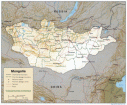 My Mongolia pages
My Mongolia pages
Map of Mongolia
Trans-Mongolian Railway
Excerpted from Wikipedia, the free encyclopedia
 Trans Mongolian Train
Trans Mongolian Train
The Trans-Mongolian Railway connects Ulan Ude,
on the Trans-Siberian Railway in Russia, with the
Chinese capital, Beijing,
by way of Ulan Bator in Mongolia.
Other important stops in Mongolia are Sükhbaatar,
Darkhan, Choir, Sainshand, and Zamyn-Üüd, and in
China Erenhot (border crossing and gauge-changing
station), Datong, and Jining.
The line was built between 1949 and 1961.
In most of Mongolia it is single-track and
in China dual-track.
The gauge is 1520 mm in Russia and Mongolia,
and 1435 mm in China.
There are important branches leading to
Erdenet and Baganuur.
History
Railway development came late to Mongolia.
Construction of the Trans-Mongolian line began in 1947,
reaching Ulan Bator from the north in 1950
and the Chinese border in 1955.
Before that the only railways in Mongolia had been
a 43-km line (opened in 1938) connecting the coal
mines at Nalaikh to the capital and a Soviet-built
236-km freight-only branch (completed in 1939) from
Borzya on the Trans-Siberian Railway to Bayantümen,
Dornod near Choibalsan in north-eastern Mongolia.
Operation
The Mongolian Railway company Mongolyn Tömör Zam
carries 80% of all freight and 30% of all passenger
transport within Mongolia.
In the aftermath of the 1990 Democratic revolution
freight traffic was reduced by about half, but by
2005 had almost returned to previous levels.
Passenger numbers had already reached the old levels
again by 2001, with 4.1 million passengers.
To maximize reliability most trains are headed by two
locomotives, since any breakdowns in rail communication
would cause serious economic disruption in a sparsely
populated country where huge distances have to be covered.
While Mongolian trains run on the Russian broad gauge
(1520 mm), China uses the standard gauge (1435 mm).
For this reason through carriages between the two
countries must have their wheels changed at the border.
Each carriage has to be lifted in turn to have its
bogies changed and the whole operation, combined
with passport and customs control,
can take several hours.

For a more information about
Trans-Mongolian Railway see Wikipedia, the free encyclopedia

This page was retrieved and condensed from
(http://en.wikipedia.org/wiki/Trans-Mongolian_Railway)
see Wikipedia, the free encyclopedia, February 2008.
All text is available under the terms of the
GNU Free Documentation License
(see
Copyrights for details).
About Wikipedia
Disclaimers

This information was correct in February 2008. E. & O.E.

2007
You can click on these photos for an enlargement
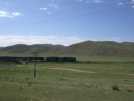 |
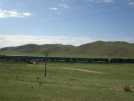 |
 |
| Trans Mongolian Railway |
Trans Mongolian Railway |
Trans Mongolian Railway |
 |
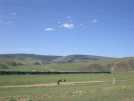 |
 |
| Trans Mongolian Railway |
Trans Mongolian Railway |
Trans Mongolian Railway |
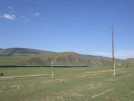 |
 |
 |
| Trans Mongolian Railway |
Trans Mongolian Railway |
Trans Mongolian Railway |
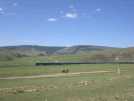 |
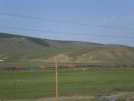 |
 |
| Trans Mongolian Railway |
Trans Mongolian Railway |
Trans Mongolian Railway |
 |
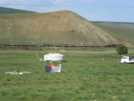 |
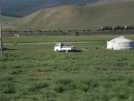 |
| Trans Mongolian Railway |
Trans Mongolian Railway |
Trans Mongolian Railway |
 |
 |
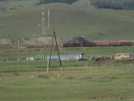 |
| Trans Mongolian Railway |
Trans Mongolian Railway |
Trans Mongolian Railway |
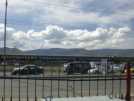 |
 |
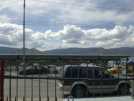 |
| Trans Mongolian Railway |
Trans Mongolian Railway |
Trans Mongolian Railway |
 |
| Trans Mongolian Railway |
|